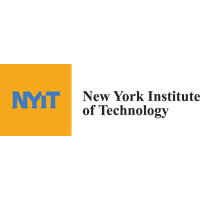Below is a summary of the abstract you submitted. Presenting author(s) is shown in bold.
If any changes need to be made, you can modify the abstract or change the authors.
You can also download a .docx version of this abstract.
If there are any problems, please email Dan at dar78@pitt.edu and he'll take care of them!
This abstract was last modified on March 16, 2021 at 11:28 p.m..

Bacteriophages are the most abundant biological particles on earth, outnumbering bacteria 10:1. Arthrobacter globiformis is a soil-dwelling bacterium that students at the New York Institute of technology used as a host to isolate novel actinobacteriophages in Fall 2019. Three of these phages, Phives, Kaylissa and Eraser were characterized, sequenced, and annotated. All three phages belong to cluster AZ and are categorized as temperate phages due to a readily identifiable integrase gene. As predicted, Phives and Kaylissa form plaques with a “bulls-eye morphology”, in line with incomplete lysis and the formation of lysogens. However, Eraser forms plaques that are large, round, and clear. The lack of the turbid center denotes a possibility that Eraser does not employ the lysogenic aspect of the cycle to the same degree as the other phages. We wondered why Eraser displays fully lytic behavior. There are numerous genomic differences between Eraser, Kaylissa, and Phives that might explain this difference. The closest relatives to Eraser, Niobe, Asa16, Elezi, and London also have a hazy bulls-eye plaque morphology. We use computational tools in an attempt to identify the genetic changes that lead to altered plaquing behavior in Eraser as compared with other cluster AZ phages.
